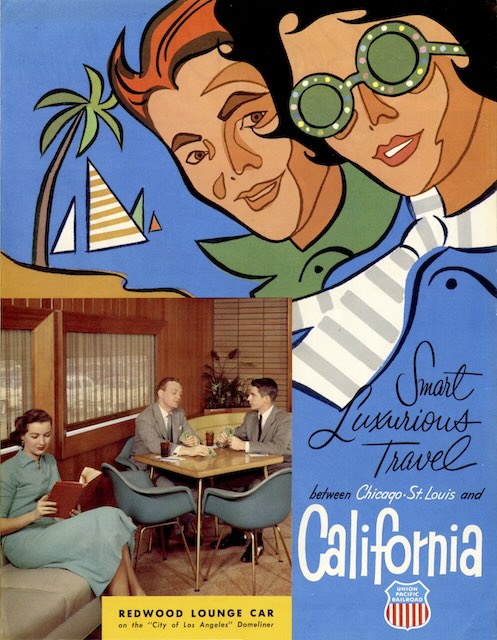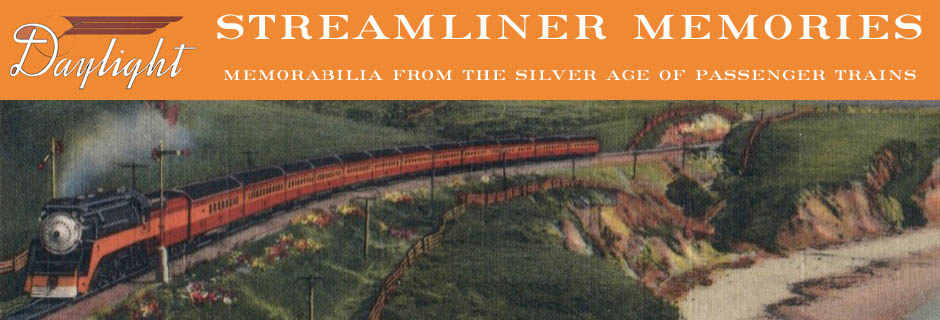Union Pacific was pleased to announce with this brochure that the Challenger would begin operating as a separate train from the City of Los Angeles beginning June 1, 1957. This meant it would offer three trains a day between the Midwest and southern California plus a fourth train, the City of San Francisco, to the Bay Area.
 Click image to download a 2.8-MB PDF of this brochure.
Click image to download a 2.8-MB PDF of this brochure.
After being discontinued as a heavyweight in 1946, the Challenger was put back on the timetable as a lightweight in January 1954, running roughly twelve hours apart from the City of Los Angeles1. A year later it became the first Union Pacific train to carry a dome car. But in the spring of 1956, as a cost-cutting measure it was combined with the City of Los Angeles.
Starting in 1957, the two trains would be separated in the summers and holiday seasons but would run only about 2-1/2 hours apart instead of 12. That lasted until 1960 after which the Challenger and City of Los Angeles were combined year around, though each had their own diners and lounges.
Union Pacific had three kinds of dome cars: dome-coaches, dome-diners, and dome-lounges. While all three were on the City of Portland, when they ran separately the Challenger got the dome-coaches while the City of Los Angeles got the diners and lounges. The third Los Angeles train mentioned in this brochure, the City of St. Louis, had a dome-lounge from Kansas City to Los Angeles.
The brochure also mentions the City of San Francisco but not the San Francisco Overland. That train stopped operating east of Omaha in October 1955. While Union Pacific continued to operate it between Omaha and Ogden, it dropped the name in 1956. It shows up in UP’s 1957 timetable as trains 27 and 28 with a note that it carried only a coach between Green River and Omaha, “no sleeping car; no diner.”
This brochure is typical of UP’s 8-1/2″x11″ brochures except they have usually been folded in thirds for mailing purposes. This one has only been folded once to turn the 11″x17″ page into a four-page brochure. The cover illustration of a casually dressed and tanned man and woman seems incongruous with the photographs of pale-skinned models (other than the waiters) aboard UP trains who are invariably dressed in business clothing.
